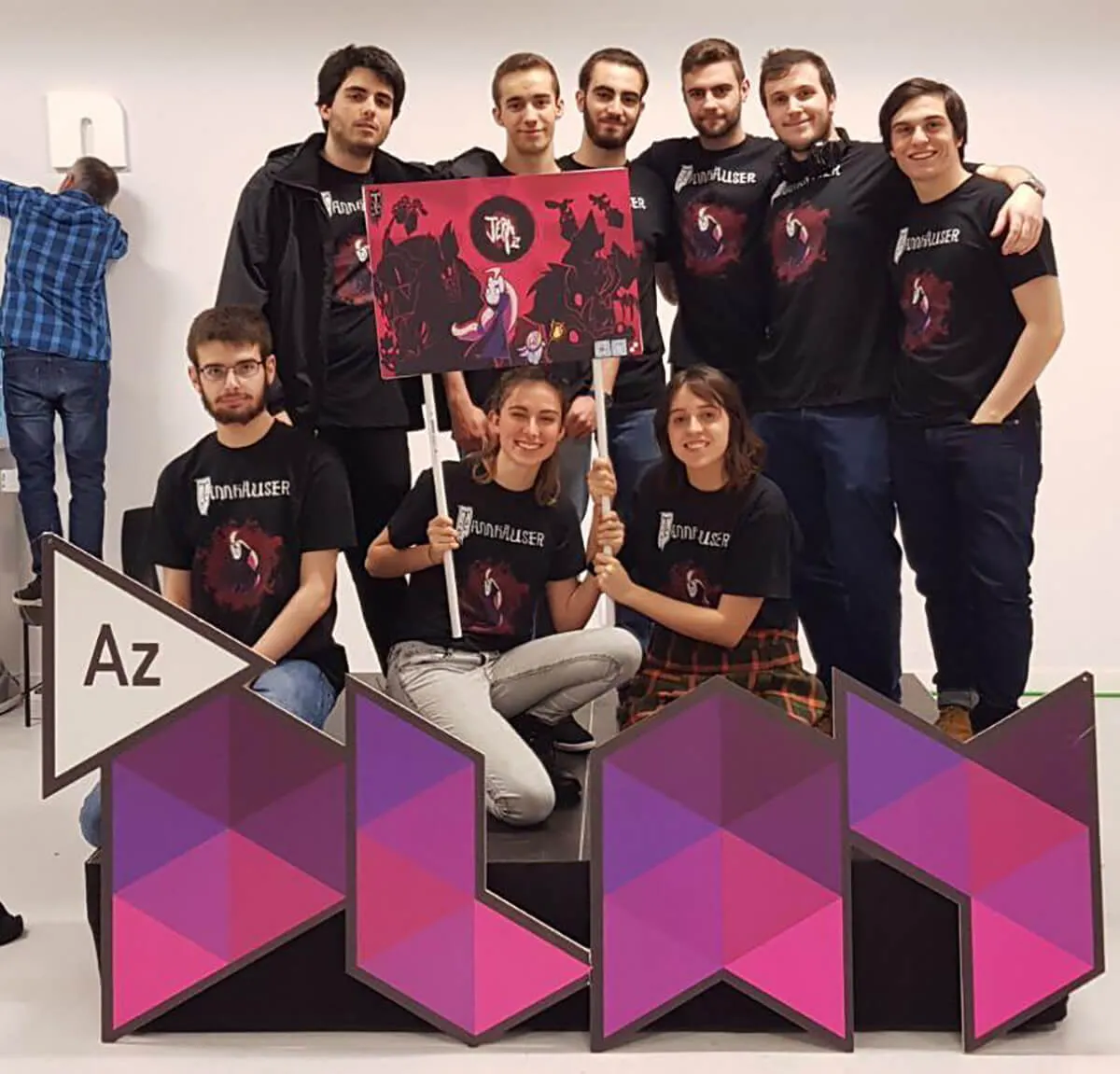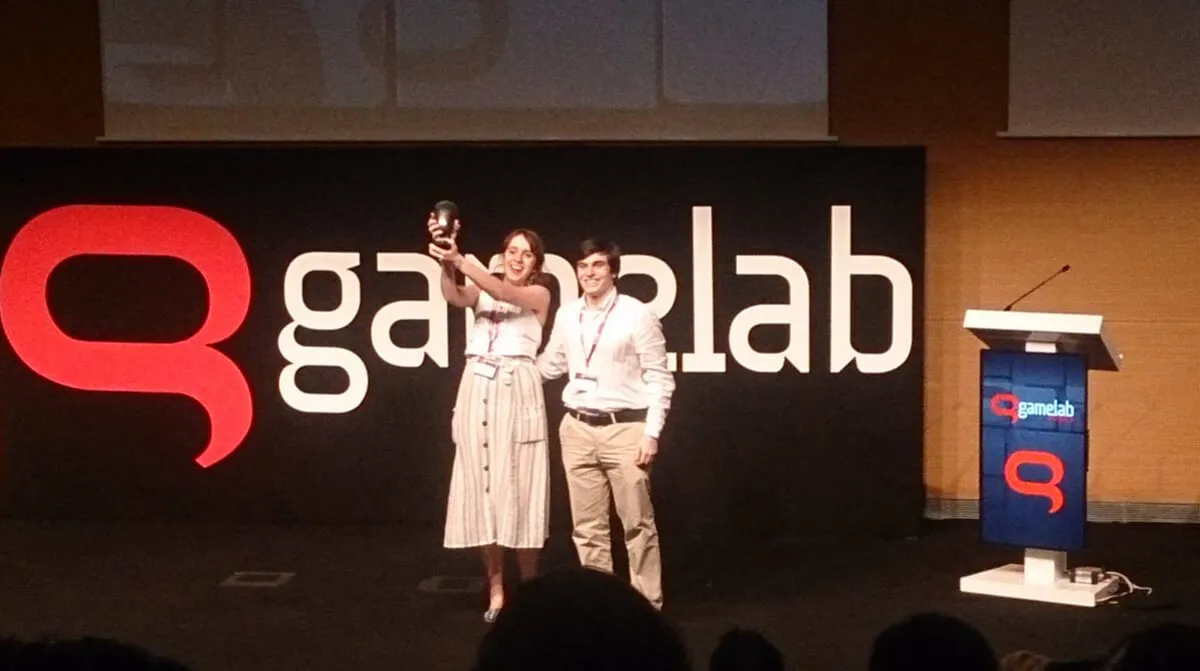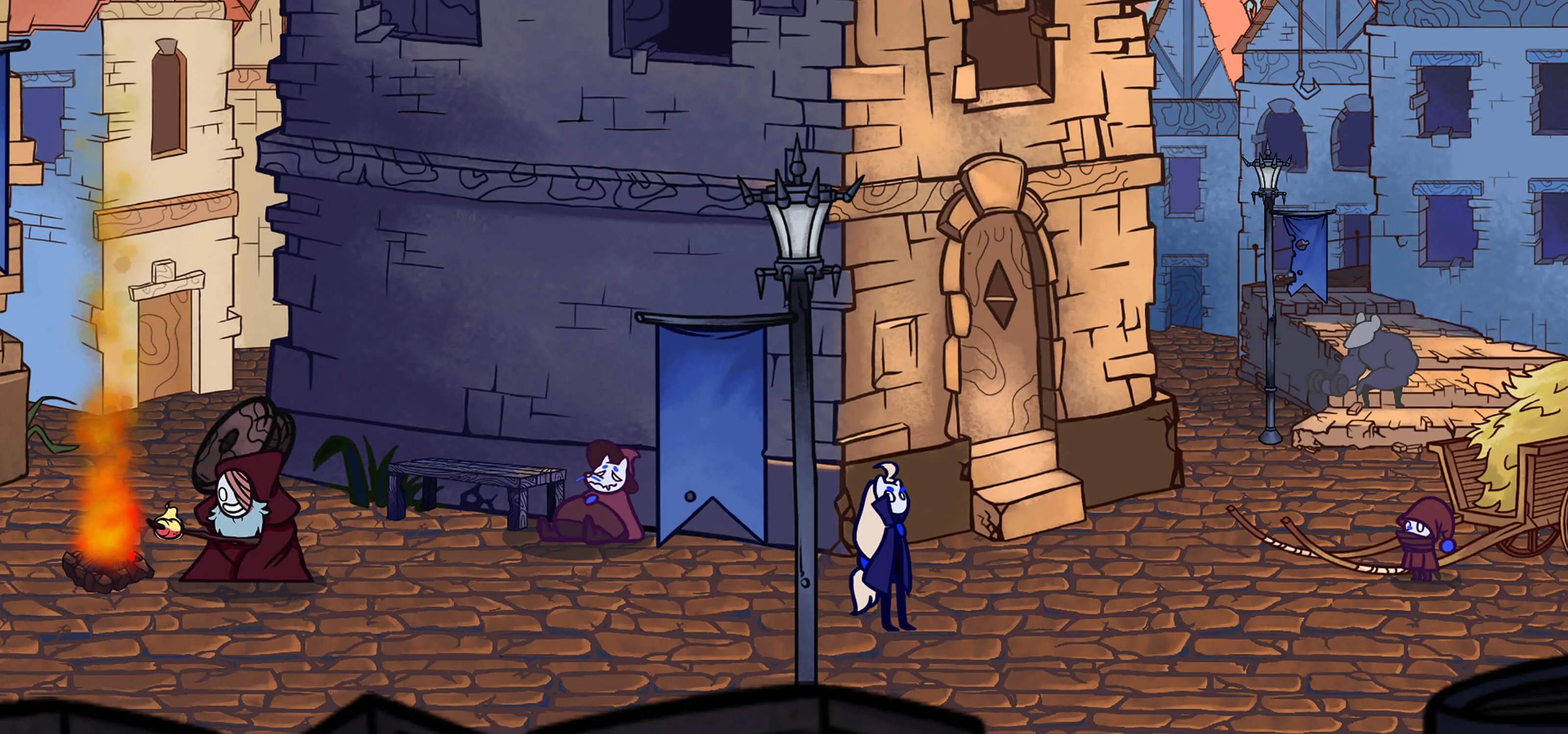When DigiPen Europe-Bilbao game Team Tannhauser was trying to decide what to do for their GAM 200 project, they knew one thing for sure — the simpler the better. It was a lesson they had learned all too well from their ambitious first-year game projects.
“In GAM 150, we had our eyes bigger than our stomach,” Alexandre Corcia, team producer and gameplay designer, says. That focused, pared-down mindset paid off. Jera, the 2D platformer that emerged from their seven months of hard work, led to an invitation to Barcelona, where they would go on to win the high honor of the Gamelab Conference’s “Best University Game” award.
Corcia and engine programmer Javier Gimenez decided to start brainstorming for their GAM 200 project early, getting a jumpstart on planning during the summer. The idea that would spark Jera’s core mechanic came while Corcia was playing Nintendo’s Splatoon with a friend. “We really enjoyed the mechanic of going into the ink,” Corcia says. Ducking into the squid ink and gliding effortlessly around the map got Corcia thinking about a 2D platformer built around similarly fluid motion. “What we really wanted was for the player to be able to use all of these powers to feel like they’re moving, flowing — something really smooth,” Corcia says. But how to frame it?
“We wanted to create a magical environment,” Tannhauser concept artist Inigo Galvez says. “We wanted to create our own world, something medieval but [not] stereotypical.” Galvez, along with Tannhauser’s five other artists, spent a lot of time nailing down their world together, no easy task given the wide range of talents at the table. “The hardest thing,” Galvez says, “was unifying our art styles, because our styles were all so different.”
One thing all the artists (and most of the programmers) had in common, however, was a shared love of the 2D ‘Metroidvania’ Hollow Knight, a cartoony, yet sophisticated game whose distinct visuals deepen and enrich its imaginative world, set in a subterranean insectoid kingdom. Inspired, the art team set about building the ancient environments of Jera, full of rune-inscribed stones and strange, enchanted creatures.

To fit with that world, and to realize their vision of fluid-motion navigation, the programmers designed and implemented a series of elemental powers, which Jera, the eponymous hero of the game, collects as she progresses. In an homage to Splatoon, Jera’s first ability is “earth swimming,” a power that allows her to zip through dirt as if it were water. Her next ability, “fire dash,” lets her charge up a long combustible leap through the air. Finally, her wind “bubble” power lets her float through the air and ride gusts. After racking their brains to come up with a water power that was as integral as the others, even going so far as to consider an entirely water-based level to showcase it, the team went back to their “keep it simple” mantra in order to meet their project deadlines. The three powers, they decided, were more than enough. Combined, they can lead to incredibly acrobatic sequences as Jera dodges enemies on the ground and in the air.
Once they had a build ready to test, the programmers started to worry. “We thought the game was going to be too easy,” Gimenez says. “The game was easy for us, but that’s probably because we’re the developers.” To account for that ease, they cranked up the difficulty.
“We’d put another enemy over here or something,” Corcia says. “But suddenly you show it to a normal player and they couldn’t even go through the first few levels.”
Indeed, after rounds of playtesting, the team was overwhelmed with feedback reporting the exact opposite of their fears. “It was super hard for people!” Gimenez laughs. To balance the game, the team altered certain level designs, as well as enemy fire rates and locations. They also added far more checkpoints, allowing players to respawn mid-level instead of losing large amounts of progress.
Satisfied with the difficulty level, the team sent their game to be considered for the “Best University Game” awards category at the Gamelab Barcelona conference, an annual event held since 2005 that invites “creators, executives, investors, and media to discuss current trends and coming opportunities in the expanding universe of gaming.” Not expecting much, the team was surprised to hear they’d been nominated in the category along with fellow sophomore DigiPen game project Wahkan. They were doubly surprised when they were named the winner during the actual awards ceremony.

“We didn’t expect it at all,” Corcia says. “We were against 3D games and fourth-year games from the University of Barcelona. We said, ‘We’re already nominated. That’s amazing.’ They called the four [nominated] games with a little snippet of the trailer, and then suddenly they said our name and we thought, ‘OK, they’re going to say another game.’ And then we realized, ‘Oh no, wait — we won! OK, OK, let’s go!’”
“Seeing that the work was rewarded that way was really powerful,” Galvez says.
Although the team is still basking in their award, Tannhauser’s programmers are already hard at work coming up with ideas for their GAM 300 project, for which Gimenez has already started building an engine. “We’re definitely going to stick together,” Corcia says.
